Tanzania is story-book Africa. It’s the place where fascinating people and untamed wildlife live together in the world’s last great wildernesses. Wildebeest stampede across the plains, elephants leave giant footprints along their migration routes, red-cloaked Masai warriors graze their cattle on the semi-arid lands of the Great Rift Valley. And, it’s all very Lion King-ish when the setting sun bathes the uncluttered landscape in red and gold.
To keep all of this natural beauty alive, almost a third of the country is protected. Providing a much-needed sanctuary for the wildlife living across 16 national parks. Out of them all, the Ngorongoro Conservation Area is one of the most important.
Sadly, this World Heritage Site is often relegated to a quick stop over at the iconic crater while on the way to the fabled Serengeti. But the Ngorongoro area deserves way more attention. Nicknamed the ‘Garden of Eden’, this near-perfect oasis is an assortment of mountains, waterfalls, and volcanoes. And, because it is a protected area, only the indigenous peoples of the Maasai tribe live within its borders.
It’s an eco-tourists dream destination, and the kind of place you can only truly appreciate by getting your boots on the ground. But if you want a taste of the adventure, here are a few reasons why the Ngorongoro Conservation Area will complete your East African overland adventure.
1. It’s a predator’s paradise
When Mufasa was showing baby Simba his future kingdom, I’m pretty sure they were overlooking the Ngorongoro conservation area. This 8,300 sq km area of rolling plains and hills are teeming with over 25,000 animals, including the Big Five.
However, it’s the high density of predator-prey action in the crater that makes going on a safari here so exciting. The game viewing opportunities hard to match. Beasts of prey such as lions, leopards, cheetah, and hyenas are constantly hunting on these open plains.
In addition to this, critically endangered animals, such as the black rhino, also call the area home. And, it’s also a stomping ground for over 1 million wildebeest during the annual migration. Witness thousands of baby wildebeests being born and a plethora of opportunistic predators in stealth mode.
2. The Ngorongoro Conservation Area is one of the world’s first “multi-use areas”
Wherever you go in Tanzania, there will be plenty of opportunities to get to know the country’s people. More than anything else, it’s these amazing people and their fascinating cultures that will make your overland trip so memorable. And, while there are plenty of unique tribes and cultures in Tanzania, the Maasai are undoubtedly the face of the region.
They wandered into this area around 200 years ago, and now makeup around 98% of the resident population. The remaining 2% are Datooga and a few Hadzabe families who live on the very edge of Ngorongoro by Lake Eyasi.
To help preserve the region’s cultural heritage, the Ngorongoro area was dubbed a multiple-use landscape. As a result the land’s original people could share the space with the wildlife. This makes it possible for the traditionally pastoral people to live harmoniously with wildlife. Their cows and wild zebras often graze side by side, and giraffe are often spotted wandering right by the Maasai homesteads.
Unfortunately, there are some downsides to this way of life. With the limited barrier between wildlife and people, conflicts are on the rise. And, because of this, lions have all but disappeared from much of Ngorongoro’s community areas.
In an attempt to offset the dwindling lion herds, the crater was gazetted as the only exception to the multi-use principle and is thereby completely protected. The crater itself is like a natural terrarium, filled with every African animal you can think of – including the rare black-maned lion.
3. It’s East Africa’s Garden of Eden
While the notion of talking snakes is improbable, the Ngorongoro region is thought to have been home to the earliest known human species. Like the Garden of Eden. . . but in real life. Dubbed the ‘Cradle of humankind’, the Ngorongoro Conservation Area is one of the most important prehistoric sites in the world.
Over the last 80 years, the area has been subjected to extensive archaeological research. Ultimately producing evidence of human evolution extending over a span of almost four million years to the early modern era.
Olduvai Gorge is one of the most famous fossil sites. Wedged in a valley on the Ngorongoro’s eastern boundaries, this ancient land has produced evidence of many of our hominid ancestors. While you’re here, you’ll learn about the earliest made tools and how these ancient people may have lived.
But, if you truly want to walk a mile in our ancestor’s shoes then head to the Laetoli Ruins. Just 45km away from the Oldupai Gorge is a 27m-long trail of 3.7-million-year-old hominid footprints. It’s believed to be one of the longest-lived and best-known early human species. The tracks are the oldest of their kind ever found, providing crucial evidence that walking on two legs was picked up early in the human lineage.
Explore the Ngorongoro Conservation Area and discover this Wildlife Sanctuary:
From From From From From From From From From From From From From From From From From From From From From From From From From From From From From From From From From From From From From From From From From From From From From From From From From From From From From From From From From From From From From From From From From From From From From From From From From From From From From From From From From From From From From From From From From From From From From From From From From From From From From From From From From From From From From From From From From From From From From From From From From From From From From From From From From From From
Tour Length
42 days
Group Size
Max 20
Starts & Ends
Starts: Cape Town Ends: Nairobi
Countries
South Africa,
Namibia,
Botswana,
Zimbabwe,
Zambia,
Malawi,
Tanzania,
Kenya
Overview
Safari drives in the Serengeti? Check! A river Cruise in Chobe National Park? Check. Authentic camping experience? Big Check! We’ve left no stone unturned when putting together this legendary itinerary. All you need to do is kick back discover the stunning wilderness and vibrant cultures of eight countries across the continent. This is how you travel Africa.
Cape Town to Nairobi Tour (Camping) – Most Popular
Tour start → end dates
Price
Enquire
27 Apr 2024
→
07 Jun 2024
Check Availability
11 May 2024
→
21 Jun 2024
Check Availability
25 May 2024
→
05 Jul 2024
Check Availability
08 Jun 2024
→
19 Jul 2024
Check Availability
22 Jun 2024
→
02 Aug 2024
Check Availability
06 Jul 2024
→
16 Aug 2024
Check Availability
20 Jul 2024
→
30 Aug 2024
Check Availability
03 Aug 2024
→
13 Sep 2024
Check Availability
17 Aug 2024
→
27 Sep 2024
Check Availability
31 Aug 2024
→
11 Oct 2024
Check Availability
14 Sep 2024
→
25 Oct 2024
Check Availability
28 Sep 2024
→
08 Nov 2024
Check Availability
12 Oct 2024
→
22 Nov 2024
Check Availability
26 Oct 2024
→
06 Dec 2024
Check Availability
09 Nov 2024
→
20 Dec 2024
Check Availability
23 Nov 2024
→
03 Jan 2025
Check Availability
07 Dec 2024
→
17 Jan 2025
Check Availability
04 Jan 2025
→
14 Feb 2025
Check Availability
18 Jan 2025
→
28 Feb 2025
Check Availability
01 Feb 2025
→
14 Mar 2025
Check Availability
15 Feb 2025
→
28 Mar 2025
Check Availability
01 Mar 2025
→
11 Apr 2025
Check Availability
15 Mar 2025
→
25 Apr 2025
Check Availability
29 Mar 2025
→
09 May 2025
Check Availability
12 Apr 2025
→
23 May 2025
Check Availability
26 Apr 2025
→
06 Jun 2025
Check Availability
10 May 2025
→
20 Jun 2025
Check Availability
24 May 2025
→
04 Jul 2025
Check Availability
07 Jun 2025
→
18 Jul 2025
Check Availability
21 Jun 2025
→
01 Aug 2025
Check Availability
05 Jul 2025
→
15 Aug 2025
Check Availability
19 Jul 2025
→
29 Aug 2025
Check Availability
02 Aug 2025
→
12 Sep 2025
Check Availability
16 Aug 2025
→
26 Sep 2025
Check Availability
30 Aug 2025
→
10 Oct 2025
Check Availability
13 Sep 2025
→
24 Oct 2025
Check Availability
27 Sep 2025
→
07 Nov 2025
Check Availability
11 Oct 2025
→
21 Nov 2025
Check Availability
25 Oct 2025
→
05 Dec 2025
Check Availability
08 Nov 2025
→
19 Dec 2025
Check Availability
22 Nov 2025
→
02 Jan 2026
Check Availability
06 Dec 2025
→
16 Jan 2026
Check Availability
Tour Length
12 days
Group Size
Max 17
Starts & Ends
Starts: Nairobi Ends: Nairobi
Countries
Kenya,
Tanzania
Overview
Nothing can compare to encountering the legendary wildlife of the Serengeti and Masai Mara in the flesh. That’s why we’ve dedicated 12 full days to exploring this iconic safari circuit.
Traverse incredible national parks where golden grasslands stretch onto the ends of the earth, watch wildebeest kick up the rich African dust as they migrate in their millions, and venture off track to isolated regions to meet local tribes world apart. The road is as diverse as it is unpredictable, so be prepared for adventure.
Your tour requires participation from all group members. This entails assisting with the food preparation, washing of dishes, keeping the truck clean and the setting up the camp. Please keep in mind that flexibility and an open mind is needed on the trip. All guides are registered with the Field Guide Association of Southern Africa (FGASA).
Kenya & Tanzania Budget Safari (All Inclusive)
Tour start → end dates
Price
Enquire
28 Apr 2024
→
09 May 2024
Check Availability
12 May 2024
→
23 May 2024
Check Availability
26 May 2024
→
06 Jun 2024
Check Availability
09 Jun 2024
→
20 Jun 2024
Check Availability
23 Jun 2024
→
04 Jul 2024
Check Availability
07 Jul 2024
→
18 Jul 2024
Check Availability
21 Jul 2024
→
01 Aug 2024
Check Availability
04 Aug 2024
→
15 Aug 2024
Check Availability
18 Aug 2024
→
29 Aug 2024
Check Availability
01 Sep 2024
→
12 Sep 2024
Check Availability
15 Sep 2024
→
26 Sep 2024
Check Availability
29 Sep 2024
→
10 Oct 2024
Check Availability
13 Oct 2024
→
24 Oct 2024
Check Availability
27 Oct 2024
→
07 Nov 2024
Check Availability
10 Nov 2024
→
21 Nov 2024
Check Availability
24 Nov 2024
→
05 Dec 2024
Check Availability
08 Dec 2024
→
19 Dec 2024
Check Availability
22 Dec 2024
→
02 Jan 2025
Check Availability
Tour Length
5 days
Group Size
Min 2 Max 7
Starts & Ends
Starts: Arusha Ends: Arusha
Countries
Tanzania
Overview
Our 5 Day Tanzania Tented Camp Safari takes you to the beauty that is the infamous Serengeti National Park while camping in the untamed wilderness and heading off on action-packed safaris. You will travel with approximately 7-10 people that are like-minded, if not people you have chosen to travel with.
Specially designed 4x4 vehicles will take you on the rough Tanzanian roads, but these are the best times for game viewing as you are guaranteed a window seat.
5 Day Safari Tanzania Tented Camps
Tour start → end dates
Price
Enquire
30 Apr 2024
→
04 May 2024
Check Availability
03 May 2024
→
07 May 2024
Check Availability
07 May 2024
→
11 May 2024
Check Availability
10 May 2024
→
14 May 2024
Check Availability
14 May 2024
→
18 May 2024
Check Availability
17 May 2024
→
21 May 2024
Check Availability
21 May 2024
→
25 May 2024
Check Availability
24 May 2024
→
28 May 2024
Check Availability
28 May 2024
→
01 Jun 2024
Check Availability
31 May 2024
→
04 Jun 2024
Check Availability
04 Jun 2024
→
08 Jun 2024
Check Availability
07 Jun 2024
→
11 Jun 2024
Check Availability
11 Jun 2024
→
15 Jun 2024
Check Availability
14 Jun 2024
→
18 Jun 2024
Check Availability
18 Jun 2024
→
22 Jun 2024
Check Availability
21 Jun 2024
→
25 Jun 2024
Check Availability
25 Jun 2024
→
29 Jun 2024
Check Availability
28 Jun 2024
→
02 Jul 2024
Check Availability
02 Jul 2024
→
06 Jul 2024
Check Availability
05 Jul 2024
→
09 Jul 2024
Check Availability
09 Jul 2024
→
13 Jul 2024
Check Availability
12 Jul 2024
→
16 Jul 2024
Check Availability
16 Jul 2024
→
20 Jul 2024
Check Availability
19 Jul 2024
→
23 Jul 2024
Check Availability
23 Jul 2024
→
27 Jul 2024
Check Availability
26 Jul 2024
→
30 Jul 2024
Check Availability
30 Jul 2024
→
03 Aug 2024
Check Availability
02 Aug 2024
→
06 Aug 2024
Check Availability
06 Aug 2024
→
10 Aug 2024
Check Availability
09 Aug 2024
→
13 Aug 2024
Check Availability
13 Aug 2024
→
17 Aug 2024
Check Availability
16 Aug 2024
→
20 Aug 2024
Check Availability
20 Aug 2024
→
24 Aug 2024
Check Availability
23 Aug 2024
→
27 Aug 2024
Check Availability
27 Aug 2024
→
31 Aug 2024
Check Availability
30 Aug 2024
→
03 Sep 2024
Check Availability
03 Sep 2024
→
07 Sep 2024
Check Availability
06 Sep 2024
→
10 Sep 2024
Check Availability
10 Sep 2024
→
14 Sep 2024
Check Availability
13 Sep 2024
→
17 Sep 2024
Check Availability
17 Sep 2024
→
21 Sep 2024
Check Availability
20 Sep 2024
→
24 Sep 2024
Check Availability
24 Sep 2024
→
28 Sep 2024
Check Availability
27 Sep 2024
→
01 Oct 2024
Check Availability
01 Oct 2024
→
05 Oct 2024
Check Availability
04 Oct 2024
→
08 Oct 2024
Check Availability
08 Oct 2024
→
12 Oct 2024
Check Availability
11 Oct 2024
→
15 Oct 2024
Check Availability
15 Oct 2024
→
19 Oct 2024
Check Availability
18 Oct 2024
→
22 Oct 2024
Check Availability
22 Oct 2024
→
26 Oct 2024
Check Availability
25 Oct 2024
→
29 Oct 2024
Check Availability
29 Oct 2024
→
02 Nov 2024
Check Availability
01 Nov 2024
→
05 Nov 2024
Check Availability
05 Nov 2024
→
09 Nov 2024
Check Availability
08 Nov 2024
→
12 Nov 2024
Check Availability
12 Nov 2024
→
16 Nov 2024
Check Availability
15 Nov 2024
→
19 Nov 2024
Check Availability
19 Nov 2024
→
23 Nov 2024
Check Availability
22 Nov 2024
→
26 Nov 2024
Check Availability
26 Nov 2024
→
30 Nov 2024
Check Availability
29 Nov 2024
→
03 Dec 2024
Check Availability
03 Dec 2024
→
07 Dec 2024
Check Availability
06 Dec 2024
→
10 Dec 2024
Check Availability
10 Dec 2024
→
14 Dec 2024
Check Availability
13 Dec 2024
→
17 Dec 2024
Check Availability
17 Dec 2024
→
21 Dec 2024
Check Availability
20 Dec 2024
→
24 Dec 2024
Check Availability
24 Dec 2024
→
28 Dec 2024
Check Availability
27 Dec 2024
→
31 Dec 2024
Check Availability
31 Dec 2024
→
04 Jan 2025
Check Availability
4. It’s a photographer’s wonderland
Let’s face it, you cannot go on a safari without coming home with tons of photos of Africa’s iconic wildlife. But, this is Africa and things don’t always go as planned, especially when it comes to wildlife photography. Thankfully, the Ngorongoro crater’s unique landscape makes it super easy for you to capture amazing images.
About three million years ago, a volcano roughly the size of Kilimanjaro exploded and collapsed on itself. Thus creating what would be one of Africa’s Seven Natural Wonders. Today, this 610 meters deep bowl (2,000 feet) is teeming with about 25,000 animals.
The flat, uncluttered landscape makes it one of the world’s premier game-watching destinations. Unfortunately, you won’t spot any giraffes here. But sadness aside; in every direction you look, you can spot zebras, lions, elephants, wildebeests, and, if you’re lucky, black rhinos, too! Like a natural animal enclosure, this caldera provides a stage for wildlife action as prey and predators graze and stalk their way around the open crater floor.
5. The remoteness of the Gol Mountains
You can’t get anymore off the beaten-track than this. The Gol Mountains are so remote and untouched that the only tracks you’ll find are those left by wildlife and traditional herders.
On the northern border of the Ngorongoro conservation area, these isolated and ecologically fragile mountains remain one of the most traditional corners of Tanzania. Here you’ll find extraordinary flora and fauna living alongside the Maasai who still hunt lions as their rite of passage into warriorhood.
If you’re looking for the ‘real’ Africa, this is as authentic as it gets. But take heed; traveling here is a huge, multi-day undertaking that is challenging to navigate. Intrepid travelers up to the task will be enjoy a surreal wilderness environment of stark, pink cliffs, dramatic canyons, and wide meandering valleys.
6. The beauty of lesser-known craters
When people say “Ngorongoro Conservation Area“, pictures of the world-renowned Crater are the first to come to mind. But, in the shadows of this UNESCO World Heritage Site, you’ll find a few lesser known craters that escape even the most comprehensive safari itineraries.
In the Highlands of the NCA, just 40km away from the famous Ngorongoro crater, lies the Empakaai Crater. This lake, which draws flamingos and other waterbirds, fills most of the crater floor and enclosed by forested cliffs. From this vantage point, adventurous travelers are treated to splendid views of the crater along with a glimpse of Oldoinyo Lengai, Tanzania’s most active volcano.

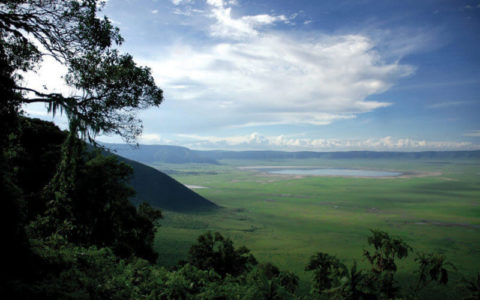
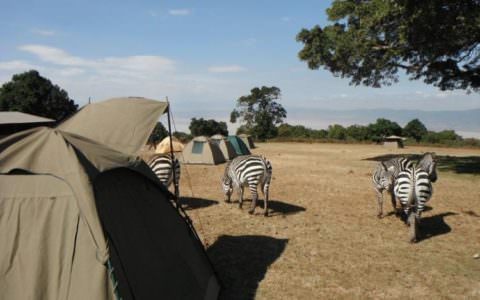
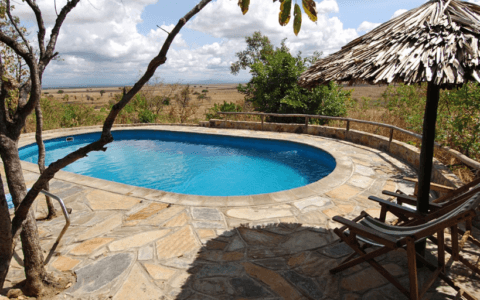



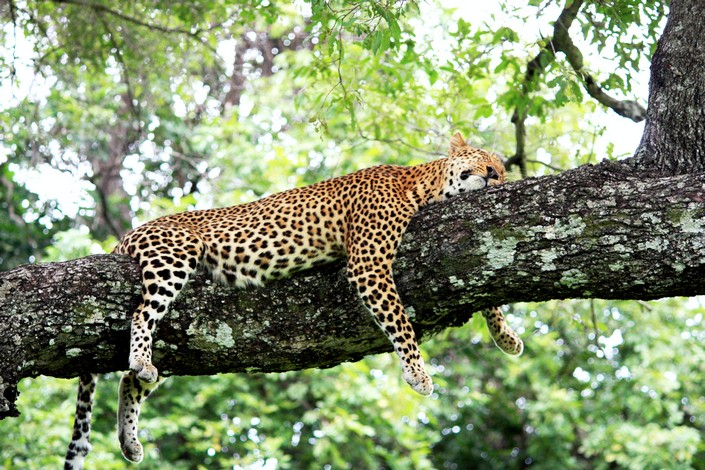
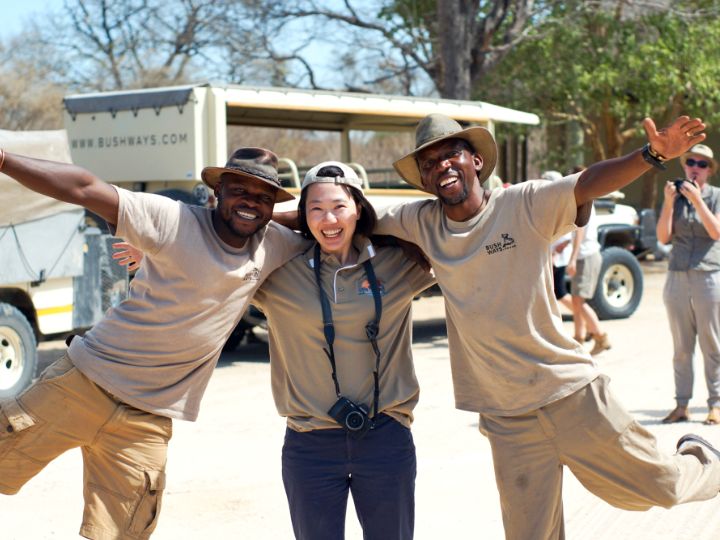

0 Comments